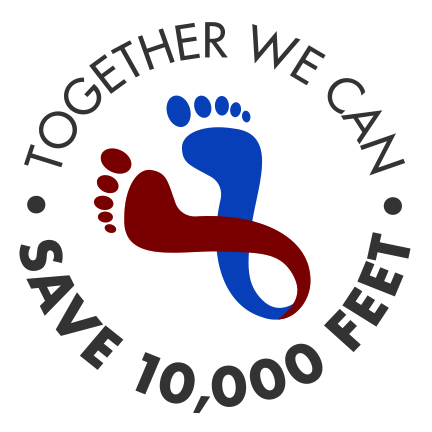What you can do about Peripheral Artery Disease
PAD affects 1 in 5 baby boomers and 1 in 3 diabetics over the age of 50. This might be you, or it could be someone you love – your spouse, parents, grandparents, or your extended family. Take the PAD questionnaire.
This is not a diagnosis, but the numbers tell a story that would lend this to be true. We also know someone that might have a family history of high cholesterol or heart disease. All of these are risk factors of PAD and why we are raising awareness of this silent disease.
In Arizona alone, there are an estimated 140,000 residents that have PAD. . . and that does not include the millions of seasonal retirees that visit the state during the winter months. This data relates directly to the known number of diabetics, and the growing epidemic that diabetes presents to our aging population. But you don't have to have diabetes to have PAD.
A comprehensive PAD evaluation is the only way to know for sure. As part of the #StandAgainstPAD campaign, Modern Vascular has committed to providing 5,000 comprehensive PAD evaluations over the course of the year. PAD is easy to diagnose and easy to treat, if detected in time — but 50% of people do not exhibit or experience the symptoms or warning signs associated with the disease.
Comprehensive evaluation for PAD at a clinic that specializes in vascular intervention is the best option. These physicians will take your age and overall health into consideration, along with any related condition and your family medical history.
Speak with a PAD Specialist
September is PAD Awareness month, but it’s always a good time to ask questions, speak with a specialist, get comprehensively evaluated, or share PAD information with a loved one if you are concerned about leg pain and sores on their feet. There are 18 million Americans currently affected by peripheral artery disease, and that number rises concurrently with the 1.4 Million new cases of diabetes that are diagnosed every year.
The more people know about PAD, the better their chances for early detection. There are too many unnecessary amputations being scheduled, and that same number of people will also become permanently disabled. Please take advantage of the opportunity to be pro-active about your health and save your feet and toes. The time to act is now!
The first step in taking a Stand Against PAD is talking with your doctor or a specialist about peripheral artery disease. If you need to schedule a comprehensive evaluation for yourself or someone you love, then please know that it's fast and easy!
Please schedule your appointment for a comprehensive PAD evaluation today. Its the only way to know for sure. For peace of mind, and because you have so much to live for!

